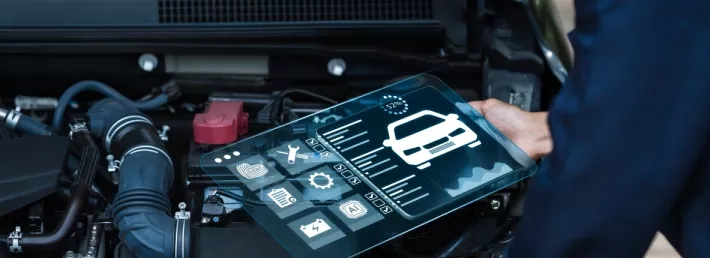What are SIC/SOC Codes and Why They're Important

When we talk about skills, workforce planning, and investment in the automotive industry, one important but often overlooked factor is how the automotive sector is classified in government data. If government cannot see our sector properly in the data, it cannot fully support it. That has real-world consequences for funding, training, and policy decisions. This is where SIC and SOC codes come in, and why the IMI’s involvement in their review is so important.
What Are SIC and SOC Codes?
SIC codes (Standard Industrial Classification) group businesses into industries such as automotive manufacturing, repair, or retail. SOC codes (Standard Occupational Classification) categorise occupations, for example motor vehicle technician, service advisor, or vehicle damage assessor.
These systems may appear technical, but they underpin how government departments, researchers and policymakers understand the economy — including how many people work in automotive, where skills shortages are emerging, and where funding or policy support should be focused. In short, they help define how the UK measures and supports its workforce.
Why Do They Matter?
At first glance, codes might seem like an administrative detail, but they have a real impact on how our industry is seen and supported. Many automotive roles are currently grouped within broad categories such as “engineering,” “manufacturing,” or even “generic repair,” which means our sector becomes partially invisible in national statistics.
When that happens, the unique skills and labour needs of automotive , especially around EV, ADAS, diagnostics, body repair and sustainable mobility, can be overlooked entirely.
This lack of accurate classification affects:
• How government identifies skills shortages
• How training and apprenticeship funding is allocated
• Which industries are prioritised in industrial strategies and net-zero planning
• How new and emerging roles are recognised and supported
Without proper classification, the automotive sector risks being underestimated in terms of its economic value, its safety-critical roles, and its contribution to the UK’s green transition.
The consequences are tangible:
• Employers may find it harder to access funding or justify new training programmes.
• Policymakers may underestimate the demand for skilled technicians, EV specialists, ADAS calibrators and body repair experts.
• Regions with large automotive employment may miss out on investment because the data does not reflect the true scale of the sector.
Why This Matters Now
The timing is crucial. The Office for National Statistics (ONS) is currently reviewing SIC and SOC codes for the first time in several years. The IMI has been invited to take part in these discussions, alongside the Society of Motor Manufacturers and Traders (SMMT), key government departments and other industry bodies. This is a once-in-a-decade opportunity to ensure automotive is properly recognised as a modern, advanced, rapidly changing sector, not simply a subsection of wider engineering.
These codes shape how jobs and industries are defined, measured, and funded. By engaging directly, the IMI is ensuring that the automotive workforce is properly recognised, and that future workforce planning accurately reflects the sector’s contribution to the economy and the green transition. It also ensures that skilled automotive professionals, from apprentices to master technicians, receive the recognition and status they deserve as part of a safety-critical, future-focused industry.
What It Means for You
For employers, improved classification means better recognition of skills shortages and more targeted funding and support.
For automotive professionals, it brings clearer career pathways, greater recognition of emerging roles, and opportunities to upskill in areas such as electric, connected, and sustainable mobility. Better classification helps ensure your work is counted and valued in the national picture.
For the sector as a whole, it creates a more accurate picture of our workforce, helping government and industry plan for the future with confidence. Most importantly, it ensures automotive is visible in data, recognised in policy, and positioned as a key contributor to safer roads, greener transport and the UK’s economic growth.
The IMI’s Commitment
The IMI is proud to represent our members and the wider automotive community in these critical policy discussions. As the voice for automotive skills, we will continue to champion proper recognition for every profession that keeps our sector moving — from vehicle technicians and MOT testers to ADAS specialists, EV experts and customer-facing roles.
We encourage members and partners to stay engaged and share their insights as we work together to ensure the UK’s automotive workforce is recognised, valued, and ready for the future.
You can keep up to date with our policy work here.




